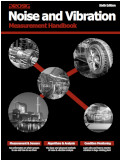What Are dB, Noise Floor & Dynamic Range?
We are often asked what noise floor & dynamic range actually are. Most engineers are probably familiar with or have come across the decibel or dB as a unit of…
We are often asked what noise floor & dynamic range actually are. Most engineers are probably familiar with or have come across the decibel or dB as a unit of…
This seemingly simple question is actually quite fundamental. To answer the question we need to consider sound intensity. Now sound intensity is defined as “the average rate of flow of…
Prosig Deutschland are exhibiting at SENSOR+TEST 2011. Prosig can be found on the iSEMcon GmbH stand (Hall 12 Stand 12-463) where we are mainly demonstrating our Sound Mapping software using…
 Sometimes we are asked about the differences between an acoustic camera and a sound intensity probe and which of the two is better for a particular application. There is no straightforward answer as they are quite different pieces of equipment, used for measuring different things. An acoustic camera is a tool used to locate and analyse sound sources, usually both steadystate and dynamic phenomena. The intensity probe is used to find the sound intensity at a particular position, usually a steadystate phenomena.
Sometimes we are asked about the differences between an acoustic camera and a sound intensity probe and which of the two is better for a particular application. There is no straightforward answer as they are quite different pieces of equipment, used for measuring different things. An acoustic camera is a tool used to locate and analyse sound sources, usually both steadystate and dynamic phenomena. The intensity probe is used to find the sound intensity at a particular position, usually a steadystate phenomena.
